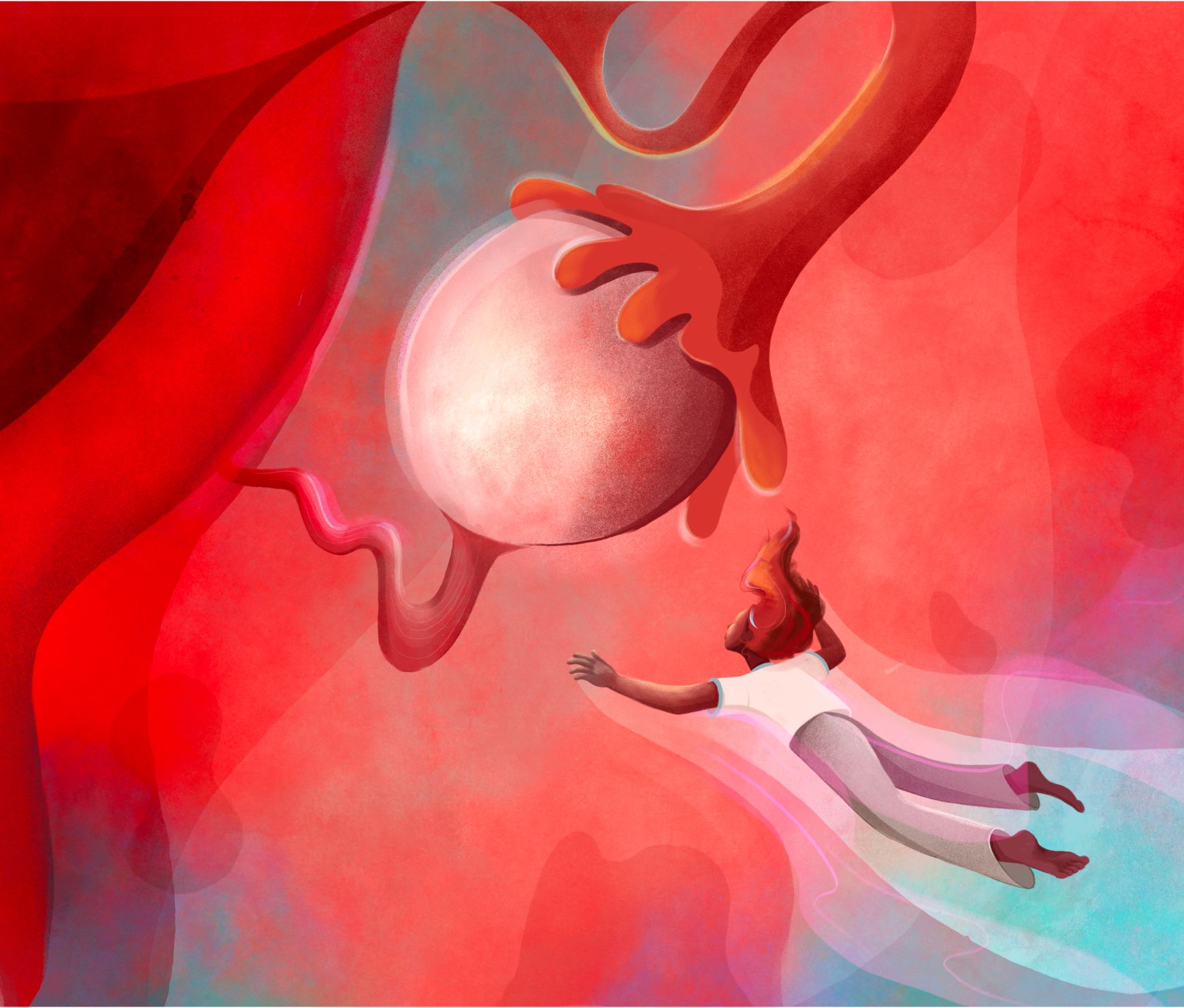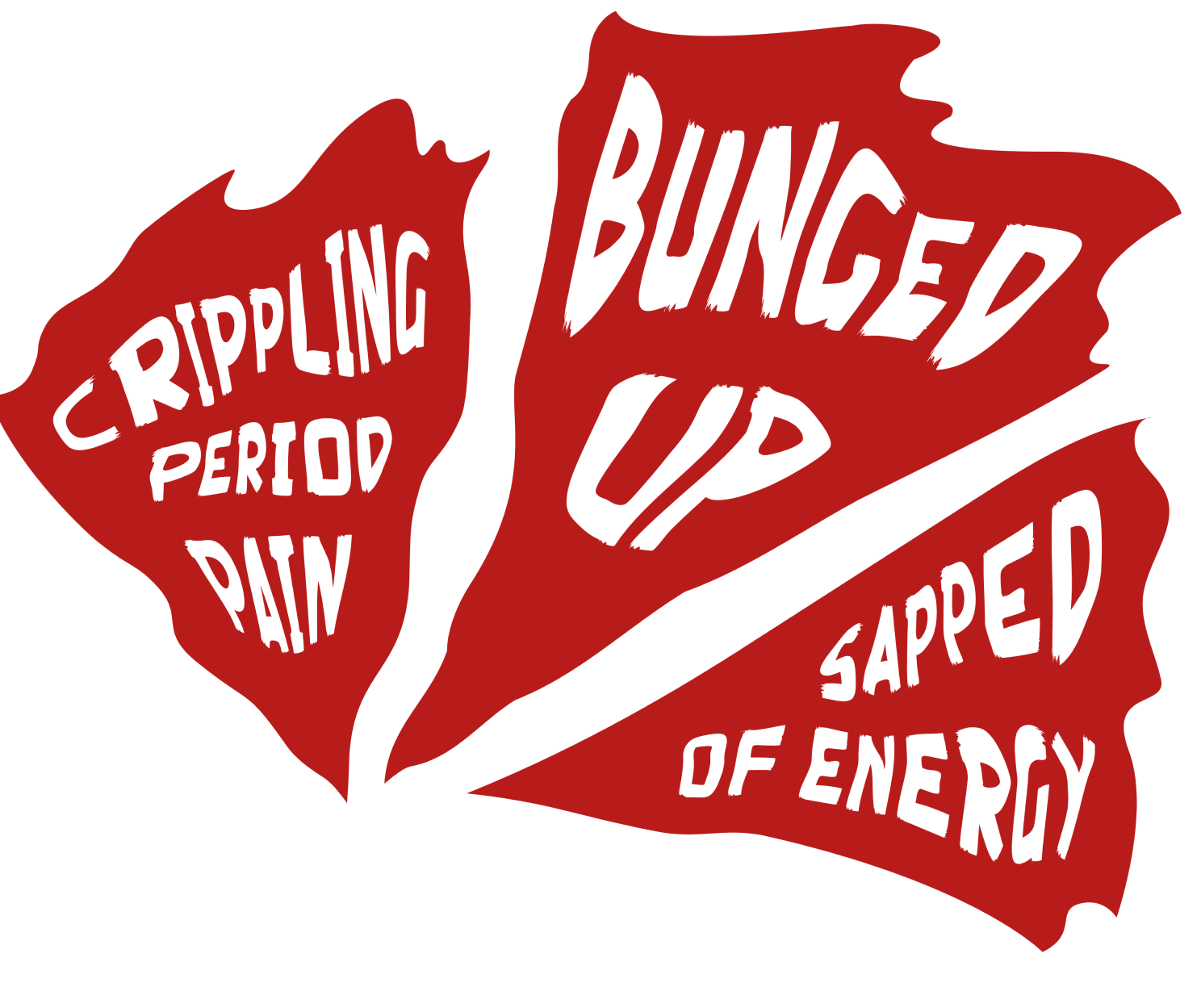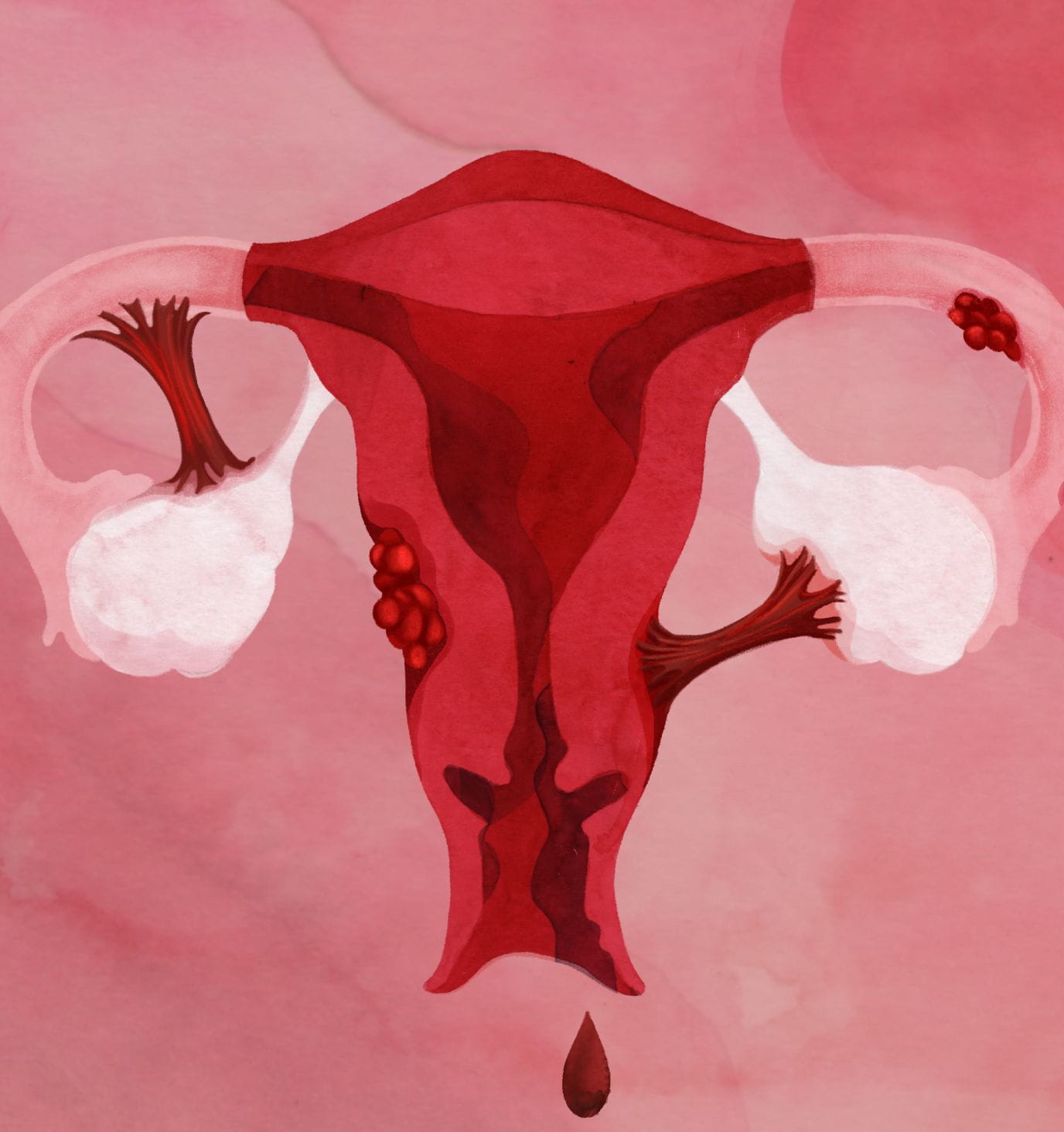So what is endometriosis?
En – doh – mee – tree – oh – sis is a condition that affects 1 in 10 people with a cervix of reproductive age in the UK1. So it’s really quite common. But you might not have heard much about it.
Though we’ve been shy with conversations about endometriosis in the UK, we haven’t scrimped on science, and we have a good idea of what causes endometriosis.
It happens when cells – that are very similar to the ones in your womb – grow outside your uterus. That could be on the ovaries or in the fallopian tubes. But they can also grow on other organs like the bowel and bladder. And this can cause painful endometriosis symptoms2,3.

Don’t wait for the next red flag. Listen to your body and book an appointment with your GP.
Check out our guide to talking to your GP about Endo.
Be ready for your GPThe red flags
When the same thing happens every month, it’s easy for it to become your ‘normal’. But it’s not normal for your period to painfully squeeze the joy out of your life. If you notice any of these signs and symptoms of endometriosis, your body is trying to tell you something and it’s time to visit your GP.

Ouch! Excruciating pain in your lower tummy or back.
It's a pain so bad it can leave you bent over double or bedbound. And it only gets worse around the time of your period4,5- red flag!
Blood floods.
Uh oh, has your period leaked again? You can't seem to change your tampon often enough4,5- red flag!
Sex hurts.
It aches and cramps. Or maybe it’s more like a stabbing sensation. Either way, you might be experiencing endometriosis pain during sex. Or after sex4,5. And sex just isn't fun anymore - red flag!
What is going on in the loo?
Can endometriosis cause UTI symptoms? Yes, it can! And poo problems too – sometimes you’ve got the runs. Other times you can’t go at all. You might even spot blood in the loo2,5 – red flag!
Feeling meh.
You feel down in the dumps and oh so tired around the time of your period. Sometimes you can barely open your eyes2,4,5 – red flag!

What's going on inside your body?
Though you can experience infuriating, insufferable pain any day of the month, there’s a good reason the symptoms of endometriosis might feel worse around the time of your period2,5.
Every month, the endometrial cells build up, break down and then bleed. While the cells in your womb have an escape plan – your period! – those pesky endometrial cells that are growing elsewhere in your body have nowhere to go. It’s this that causes those endometriosis pain symptoms and other nasties that get in the way of your days2,3.
Because knowledge is power, why not find out more about the science behind endometriosis? Choose to ‘Be empowered’ and you’ll be taken to a list of great sites.
Getting a diagnosis
Currently diagnosing endometriosis takes too long6. Around eight years too long. This has to change. And it WILL if we all start talking about our symptoms and raising the red flag for each other.
First, you need to stop pushing through crippling pain and embarrassing blood floods.
You need to trust what your body is trying to tell you and book an appointment with your GP.
Talk to your GP about your potential symptoms of endometriosis.
They might examine your tummy. They may also want to have an internal look at your pelvis.
But currently, the only reliable way to get endometriosis diagnosed is through a keyhole procedure4.
This is called a laparoscopy7.

''After my son was born, sex became so painful it was almost impossible. I would cry and bleed after every time we tried. I went to so many doctors, I had scans and tests and internal examinations, but nobody offered me any real explanation.''
Be ready for your GP
Useful tips for getting the most from your GP appointment.
Before you can explore endometriosis treatment, you need to talk to your GP to find out if your red flags are signs of Endo. And because appointments with your doctor can feel like they’re over in a flash, we’re here to help you make the most of your time together. Here are our top tips:
Download your red flags.
Have a chat with our Red Flag Finder and see if you’ve got any potential symptoms of endometriosis. It will helpfully give you a list of any red flags that you can download and show to your doc.
Keep and take a red flag record.
Day by day, for at least a week, write down any red flags in this handy diary. You’ll find a list of the main endometriosis symptoms near the top of this page. Remember to keep track of your period too.
Make a list of questions.
Your GP will need to ask you questions, but it’s important you get answers too. On the right, you’ll find some starters for 10. You’ll also find a longer list of helpful questions right here. Take your list with you and go through each query, one by one.
“Could it be endometriosis?”
Pose the question. Place the possibility in your GP’s mind to get them running through the list of endometriosis symptoms.
“Should my period be this painful?”
Or “Should I be leaking through my tampon so quickly?” Or “Should I feel THIS tired?!” Whatever you’re going through, do your best to describe your symptoms in as much detail as possible – and ask your GP if they think what you’re telling them is normal.
“Will I be referred to an endometriosis specialist?”
If there’s any inkling that you may have Endo, your GP may refer you to a specialist. You’ll be one step closer to endometriosis diagnosis.
“What next?”
Find out the steps your GP is going to take. Ask for a timeline too – when will you hear back from them? If they think it sounds like you might have the symptoms, ask how to get diagnosed with endometriosis.
Coping with your symptoms
Sadly, we can’t magic away endometriosis pain. But we do have some self-care advice that could make your day a little easier.
If it hurts too much – and these at-home solutions still leave you clutching your tummy and rolling around on the floor – don’t suffer in silence. Speak to your GP.
- Ease the pain. Your GP might advise you to take anti-inflammatory painkillers like ibuprofen. Some people find that warm baths and hot bots give them a little break from the pain too.
- Do some gentle exercise. An easy walk, a calm swim or these pelvic exercises can take your mind off your cramps. Exercise can actually reduce pain as well8.
- Talk to a nutritionist (there may be one at your GP). Research shows that foods rich in fibre and vitamins D, C and E can reduce endometriosis pain9.
- Do more talking. Like the old saying goes: ‘A problem shared is a problem halved’. Chatting to your friends, family and people you work with about your symptoms is good for those stress levels. And less stress could actually relieve some of your symptoms too10. By talking about it, you might even help someone else spot their own red flags of endometriosis.
- Do even more talking to your GP or an endometriosis specialist. They’re here to help you find a longer-term solution to your symptoms.
“I remember sending my boyfriend out into the streets of New York in the middle of the night, searching for stronger painkillers. But nothing would touch the sides. This was usual for me.''

References:
- Rogers PA, D'Hooghe TM, Fazleabas A, Gargett CE, Giudice LC, Montgomery GW, Rombauts L, Salamonsen LA, Zondervan KT. Priorities for endometriosis research: recommendations from an international consensus workshop. Reprod Sci. 2009;16(4):335-46.
- World Health Organization (WHO). Endometriosis Fact Sheet. Available from: https://www.who.int/news-room/fact-sheets/detail/endometriosis. [Accessed March 2024].
- Horne AW, Missmer SA. Pathophysiology, diagnosis, and management of endometriosis. BMJ. 2022;379:e070750.
- NHS. Endometriosis. Available from: https://www.nhs.uk/conditions/endometriosis/. [Accessed March 2024].
- Saunders PTK, Horne AW. Endometriosis: Etiology, pathobiology, and therapeutic prospects. Cell. 2021;184(11):2807-2824
- All Party Parliamentary Group on Endometriosis (APPG). Endometriosis in the UK: time for change. APPG on Endometriosis Inquiry Report 2020. Available from: https://www.endometriosis-uk.org/sites/default/files/files/Endometriosis%20APPG%20Report%20Oct%202020.pdf. [Accessed March 2024].
- NHS. Laparoscopy. Available from: https://www.nhs.uk/conditions/laparoscopy/. [Accessed March 2024].
- NHS. 10 ways to ease pain. Available from: https://www.nhs.uk/live-well/pain/10-ways-to-ease-pain/. [Accessed March 2024].
- Barnard ND, Holtz DN, Schmidt N, Kolipaka S, Hata E, Sutton M, Znayenko-Miller T, Hazen ND, Cobb C, Kahleova H. Nutrition in the prevention and treatment of endometriosis: A review. Front Nutr. 2023;10:108989
- Reis FM, Coutinho LM, Vannuccini S, Luisi S, Petraglia F. Is Stress a Cause or a Consequence of Endometriosis? Reprod Sci. 2020;27(1):39-45
